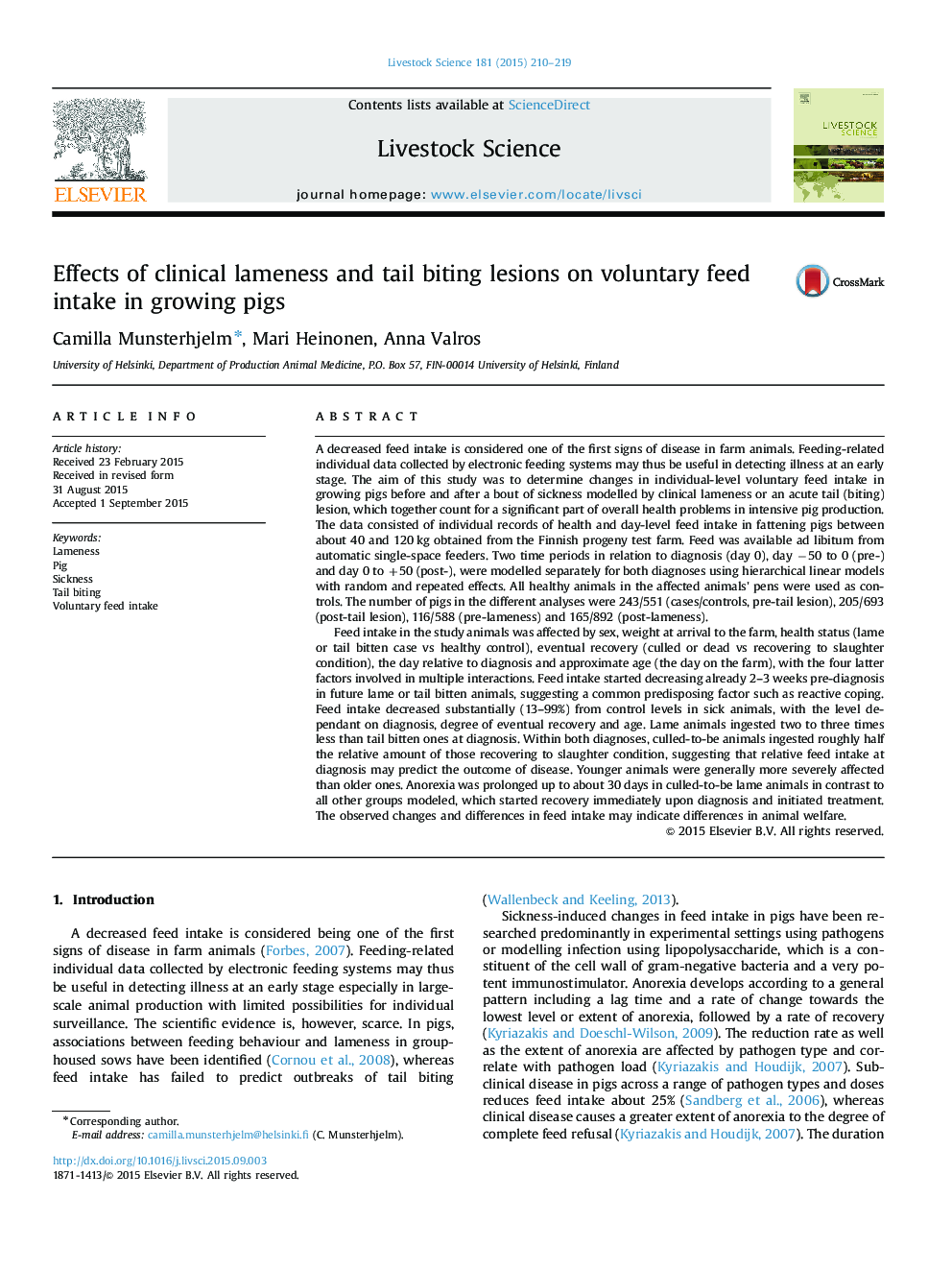| Article ID | Journal | Published Year | Pages | File Type |
|---|---|---|---|---|
| 8502163 | Livestock Science | 2015 | 10 Pages |
Abstract
Feed intake in the study animals was affected by sex, weight at arrival to the farm, health status (lame or tail bitten case vs healthy control), eventual recovery (culled or dead vs recovering to slaughter condition), the day relative to diagnosis and approximate age (the day on the farm), with the four latter factors involved in multiple interactions. Feed intake started decreasing already 2-3 weeks pre-diagnosis in future lame or tail bitten animals, suggesting a common predisposing factor such as reactive coping. Feed intake decreased substantially (13-99%) from control levels in sick animals, with the level dependant on diagnosis, degree of eventual recovery and age. Lame animals ingested two to three times less than tail bitten ones at diagnosis. Within both diagnoses, culled-to-be animals ingested roughly half the relative amount of those recovering to slaughter condition, suggesting that relative feed intake at diagnosis may predict the outcome of disease. Younger animals were generally more severely affected than older ones. Anorexia was prolonged up to about 30 days in culled-to-be lame animals in contrast to all other groups modeled, which started recovery immediately upon diagnosis and initiated treatment. The observed changes and differences in feed intake may indicate differences in animal welfare.
Related Topics
Life Sciences
Agricultural and Biological Sciences
Animal Science and Zoology
Authors
Camilla Munsterhjelm, Mari Heinonen, Anna Valros,
